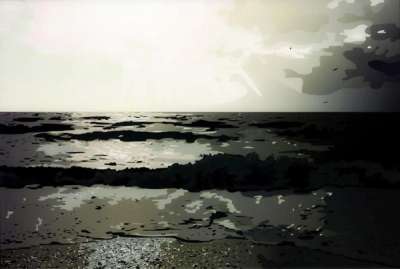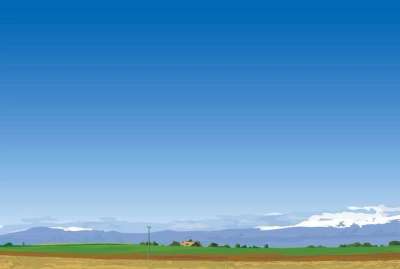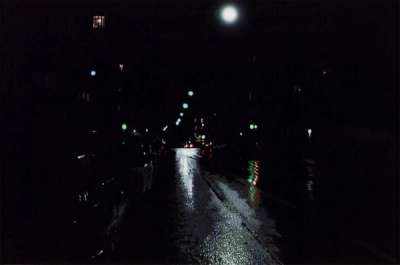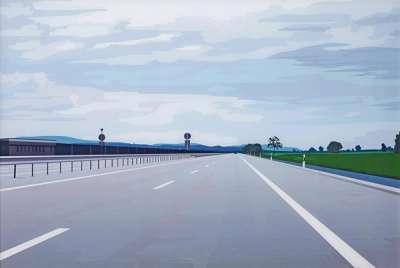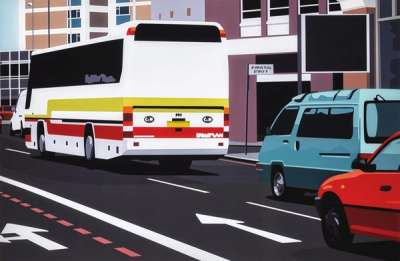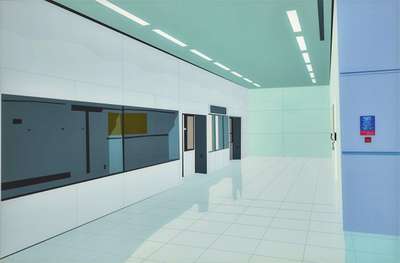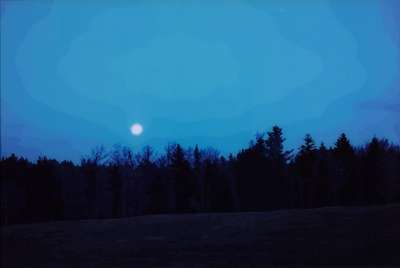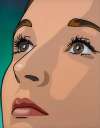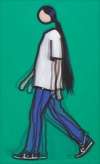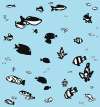Eight
Landscapes
Eight Landscapes (2000) is a set of eight digital prints by Julian Opie. Originating in photographs taken by the artist, the images were altered digitally to produce prints in Opie’s signature style of block colour, void of detail. Opie’s simplification cleverly produces universally-familiar scenes out of the specificity of photographs.
Julian Opie Eight Landscapes For sale
Eight Landscapes Market value
Auction Results
| Artwork | Auction Date | Auction House | Return to Seller | Hammer Price | Buyer Paid |
|---|---|---|---|---|---|
 Siren Radio Traffic Julian Opie Signed Print | 18 Jan 2023 | Phillips London | £2,380 | £2,800 | £3,800 |
 Rain Footsteps Siren Julian Opie Signed Print | 14 Sept 2022 | Phillips London | £1,743 | £2,050 | £2,750 |
 Truck Birds Wind Julian Opie Signed Print | 7 Jul 2021 | Rosebery's Fine Art Auctioneers | £2,210 | £2,600 | £3,400 |
 Radio Wind Tyres Julian Opie Signed Print | 9 May 2021 | Stockholms Auction House | £1,913 | £2,250 | £2,800 |
 Cowbells Tractor Silence Julian Opie Signed Print | 19 Jun 2020 | Bonhams Knightsbridge | £3,825 | £4,500 | £5,500 |
 Voices Footsteps Telephone Julian Opie Signed Mixed Media | 9 Apr 2019 | Bukowskis, Stockholm | £1,403 | £1,650 | £2,050 |
 Distant Music Water Traffic Julian Opie Signed Print | 18 Sept 2018 | Sotheby's Online | £1,445 | £1,700 | £2,250 |
Sell Your Art
with Us
with Us
Join Our Network of Collectors. Buy, Sell and Track Demand
Meaning & Analysis
Eight Landscapes is a set of eight digital prints by Julian Opie from 2000 rendered in his realistic, graphic style. Each image in the series was mounted with sound systems, playing the sounds described by the title or digital LED panels displaying the words of the title one by one.
Created from photographs taken by the artist, then scanned and altered digitally, this print is void of detail and simplified through the use of block flattened colour. Opie thus produces a generic image of the landscape that strikes a sense of familiarity within the viewer. Titling the images with descriptions of sounds he heard whilst taking the photographs, Opie explained “Things in my experience don’t look photographic. When I recall the things I did in a day, for example, it’s not as a series of photographs, high resolution pictures. It’s a series of images which resemble symbols and signs. It’s like another language.”
Eight Landscapes is devoid of any human presence and is depersonalised to the point of commodification whereby the viewer is able to make their own imaginative journey through the image. In composing this image from the perspective of someone walking along the road, Opie retains a sense of familiarity and human presence, thus inviting the viewer to step into the scene.
Opie names each print in this series with three words that refer to sounds that are not present in the actual work. Drawing attention to these sounds that can only be heard in the real world, Opie provokes the viewer to question the effectiveness of two-dimensional representations such as this. In simplifying the Eight Landscapes prints from their original photographs, Opie draws from his personal experience but depersonalises the image to allow the viewer to create their own unique interpretation. Much of Opie’s work has been compared to the digitally rendered landscapes of video games in the way that they mimic a simultaneously familiar yet otherworldly sphere.
Eight Landscapes strikes an interesting balance between the slick, impersonal style that is typical of a computer-generated image and the more personal list of sounds that Opie titles each print with. The series’ prints rekindle these familiar sounds from the viewer’s memory, and it is easy to imagine oneself within this scene. Opie frames nature within the artifice of a computer-generated image, thus the artificial is treated as if it were real by the viewer.
